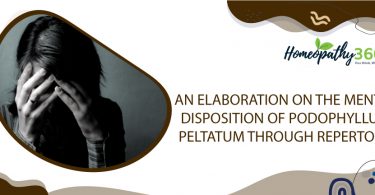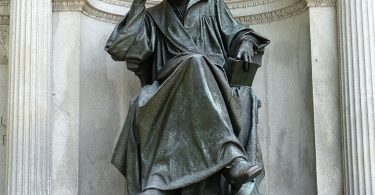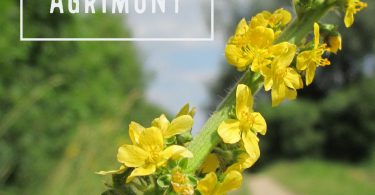Introduction
Bird remedies are very new in homeopathy. They have only been proved in the last few years
and I have seen a number of cases requiring them.
Medicines are prepared from the feather, claw or blood of the bird since any part contains the essence of the whole. Homeopathic practitioners have discovered birds and now flocks of our feathered friends have begun their flight across the globe of homeopathy. There has been a rapid increase in the number of prescriptions. Remedia Pharmacy in Eisenstadt, Austria, offers approximately 100 remedies from bird substances, including many native birds as well as exotic species such as the hummingbird species Calypte anna, and the long extinct elephant bird, Aepyornis maximus. As well as B-Jain pharmaceutical in India also. What do these fascinating and sometimes strange creatures have to offer the world of homeopathy?
When we think of birds we think of flight, soaring high in the air, bird song, the
countryside, freedom, preening… It is fascinating then to find that patients needing bird
remedies often demonstrate these themes in their lives. Each individual bird will have a
particular theme or issue which characterises it, but first we see the general theme of bird
remedies:
Bird remedies – general themes
Lightness
o In the provings there are feelings of being light, immaterial, out of the body, dreams
of flying and of being a bird.
o The patients can be light in the sense of being free of psychological “baggage”. They
may be very content with their lives and contented with themselves. Not in an
egotistical way but just having no hang-ups.
o They are people who let go of past problems and antagonisms. They do not want to
be dragged down and dragged back by negative memories. They want to be able to
fly in the psychological sense, get above mundane problems, which inhibit the
expression of their higher natures.
o They are interested in spiritual matters, music and the arts.They often have a very
spiritual perspective, seeing events in their lives and hardships as being necessary for
their soul growth.
o This contributes to their ability to lack rancour.
Freedom
o There can be a strong sense of being free or on the other hand a deep feeling of being
trapped by their circumstances and a very great desire for freedom, for their personal
space, for psychological freedom or to get into the country, to be in the mountains, in
nature.
o They can sometimes strongly resent circumstances or individuals that inhibit their
freedom. There can be a great desire to escape from obligations.
Caring
o A very strongly developed sense of duty and responsibility towards the family means
they take very seriously both the emotional and physical well-being of their loved
ones.
o At the extreme there can be a feeling of being “a food machine” – just providing food
and material comfort or, on the other hand, a strong desire to get away from this
responsibility with indifference to the family and domestic duties.
o One thinks of the parent birds working every daylight hour to feed the young in the
nest!
Danger
o Feelings of persecution, danger and of being attacked may relate to the fact that a
number of the bird remedies which have been proved have been persecuted,
especially birds of prey.
Injustice
o Perhaps as a result of the abuse and persecution of birds there is a strongly developed
sense of injustice, an aversion to the mistreatment of others, to authority and
mistreatment in general.
Sympathy
o Patients requiring bird remedies have a very strongly developed sense of sympathy.
With a deep intensity, they feel not only for the suffering of humans but also of
animals and are greatly pained by the destruction of the natural environment.
Forsaken
o This theme runs very strongly through the bird remedies. There is a strong feeling of
being rejected, deserted and isolated. Again this feeling of isolation may relate to the
persecution a number of bird species have experienced over a long period of time.
Clairvoyance
o Patients may be extremely intuitive; their physical senses may be heightened too,
with very acute vision and hearing.
Music
o There is a love for music and an aptitude in creating it. Patients have a tendency to
sing and whistle.
Preening
o There are often complaints concerning quite trivial symptoms, eg minor skin
blemishes, slight problems with the hair or fingernails. The patient may even appear
to preen during the consultation!
Physical activity
o They love to be outdoors in the fresh air and are often very good sports people. There
may be a strong desire to fly airplanes, climb mountains, or bungee jump.
Appetite
o Appetite may be ravenous and constant.
Awkwardness
o A patient can sometimes be clumsy with a tendency to drop things or bump into
things. This may be analogous to the ungainliness of birds on solid ground in contrast
to their poise and elegance in the air.
Travel
o There is a desire to travel associated with an inquisitive nature, a desire for learning,
knowledge and understanding. Some or all of these themes can be found in every case
requiring a bird remedy.
Larus argentatus, the European Herring Gull, was one of the first bird substances that
entered the homeopathic medicine chest. It was proved by Wilfried Finks ( in Germany) and
first published in Links’97.Biology of the Source Substances and Reactions to the Remedies
The qualities we associate with particular animals reappear in the homeopathic Materia
Medica, in “drug pictures” that have been developed on the basis of provings and further
clinical experience, all conducted according to strict recognized procedures. This is the
signature resonance of a substance that then becomes part of a repertory or index of
symptoms. When Lachesis is given a 3 in rubrics such as “devious, sly” or “lascivious,
lustful”, this exemplifies qualities of the snake we have learned through our mythology.
We also meet common clichés such as the “gentle dove” or “wise owl” in the core character
types of Jonathan Shore, who developed his ideas through symptoms that appeared during
the provings of individual bird remedies and through successfully treated cases. But the
similarities between the characteristics of the remedy substance and the reaction of the prover go even deeper. In their dreams the provers seem to inhabit the environment and living space of the bird being proved, and experience the bird’s specific sensitivities not only in dreams but also in physical symptoms (see the heading “Bird Remedy Themes”). A vibrating inner restlessness is common to all bird remedies, as well as attacks of hunger, which is understandable in a group of animals that eats enormous amounts compared to humans.
After many years of experience with bird remedies and this type of patient, Jonathan Shore
says, “I feel that for birds there exists a certain “lightness” or “effortlessness” in the form of a
relatively strong vibration. When you talk to them you don’t have the feeling that everything
is heavy or difficult. Although they speak about their problems, there is a certain quality to it.
It’s difficult to understand but for me perceptible. Although it’s definitely not what I
experience for every remedy or in every treatment, with birds I feel a connection to the
person and they to me. For my part, I always listen to my inner feelings concerning the
patient. This is for me of great importance. Not in order to arrive at a prescription, but rather
to confirm or reject it. My understanding of the remedy must agree with my inner feelings.”
What can homeopaths learn from birds? Their biology is seductive. Their shimmering
character makes them enchanting but also difficult to comprehend. Where does the border lie
between abstract ideal and well-founded prescription? The November 2010 issue of
“Spektrum der Homöopathie” is the first general overview in German on the subject of bird
remedies. Here interested homeopaths can find an exciting article to read about familiar and
unfamiliar bird remedies and at the same time deepen their knowledge. Maybe some will be
inspired to explore this expansive and truly exciting area and to conduct a proving conform
to recognized homeopathic standards for one of the many bird remedies that has yet to be
proved. And those who would like to learn more about the biology and “secret language of
birds” are advised to read Ralph Müller’s book of the same name, where he describes the
fascinating life of birds in a lively way, and how to understand the message that lies hidden
in their behavior, body language, and voices.





